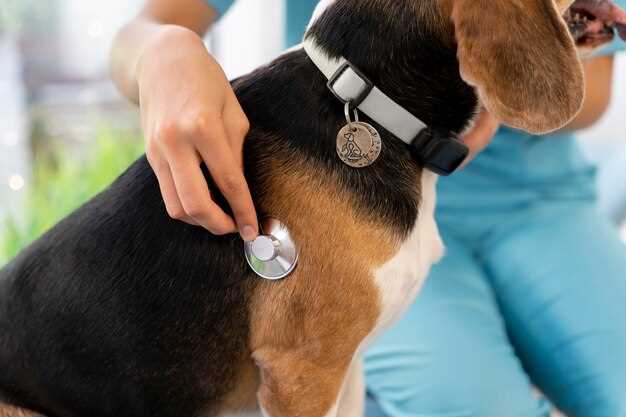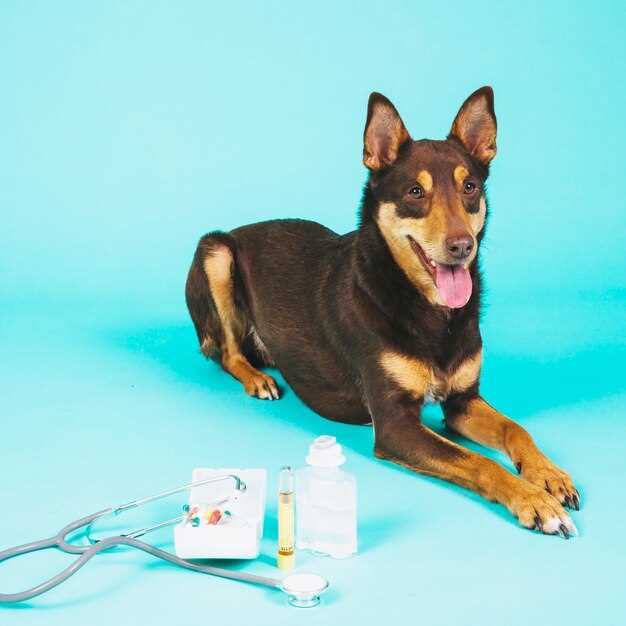
Is your furry friend in need of thyroid hormone replacement therapy? Levothyroxine could be the solution! This synthetic thyroid hormone, also known as l-thyroxine, is commonly prescribed for dogs with hypothyroidism.
Levothyroxine works by supplementing the hormone that your dog’s body is not producing enough of on its own. It can help alleviate symptoms such as weight gain, lethargy, and skin conditions, improving your dog’s overall quality of life.
Consult your veterinarian to see if levothyroxine is right for your dog and help them live a happier, healthier life today!
What is Levothyroxine?
Levothyroxine, also known as L-thyroxine, is a synthetic form of the thyroid hormone thyroxine. It is used to treat hypothyroidism in dogs, which is a condition where the thyroid gland does not produce enough thyroid hormone. Levothyroxine works by replacing the missing thyroid hormone and helps regulate the dog’s metabolism, energy levels, and overall well-being.
Benefits of Levothyroxine for Dogs

Levothyroxine is a synthetic thyroid hormone that is commonly prescribed for dogs with hypothyroidism. The benefits of Levothyroxine for dogs include:
- Regulating metabolism: Levothyroxine helps regulate a dog’s metabolism, which can help with weight management and energy levels.
- Improving coat and skin health: Thyroid hormones play a role in maintaining healthy skin and coat in dogs, so Levothyroxine can help improve the appearance of the dog’s coat and skin.
- Boosting overall health: By restoring thyroid hormone levels to normal, Levothyroxine can help improve the overall health and well-being of dogs with hypothyroidism.
- Supporting organ function: Thyroid hormones are important for the proper functioning of many organs in the body, so Levothyroxine can help support organ function in dogs with hypothyroidism.
Overall, Levothyroxine can help improve the quality of life for dogs with hypothyroidism by addressing the underlying hormone deficiency and restoring normal thyroid function.
Benefits of Levothyroxine
Levothyroxine is a synthetic hormone that is used to treat hypothyroidism in dogs. It helps to regulate the thyroid gland and improve the overall health and well-being of the animal.
This medication can help to alleviate symptoms such as fatigue, weight gain, and hair loss that are common in dogs with hypothyroidism.
Improved Energy Levels

One of the key benefits of Levothyroxine is that it can help to increase energy levels in dogs. This can lead to a more active and playful pet that enjoys engaging in daily activities.
Weight Management
Levothyroxine can also help with weight management in dogs with hypothyroidism. By regulating the thyroid gland, this medication can assist in maintaining a healthy weight and preventing obesity-related issues.
Benefits of Levothyroxine
Levothyroxine is a synthetic form of the thyroid hormone thyroxine, which is used to treat hypothyroidism in dogs. This medication can help regulate the metabolism and energy levels of your pet, improving their overall well-being.
Some of the key benefits of Levothyroxine include:
- Restoring normal thyroid hormone levels in dogs with hypothyroidism
- Improving energy levels and reducing lethargy
- Promoting weight loss in overweight or obese dogs
- Enhancing the quality of the coat and skin
- Regulating the metabolism and promoting overall health
It is important to follow your veterinarian’s instructions carefully when administering Levothyroxine to ensure the best results for your pet.
Benefits of l-thyroxine
L-thyroxine is a synthetic thyroid hormone that offers several benefits for dogs with hypothyroidism. Some of the key advantages of l-thyroxine include:
- Improvement in energy levels: L-thyroxine can help increase energy levels in dogs, reducing lethargy and promoting a more active lifestyle.
- Weight management: Proper thyroid hormone levels can aid in weight management, helping dogs maintain a healthy weight.
- Regulation of metabolism: L-thyroxine plays a crucial role in regulating metabolism, ensuring optimal functioning of various bodily processes.
- Enhanced coat and skin health: Dogs receiving l-thyroxine treatment often experience improvements in coat quality and skin health, reducing issues like dryness and hair loss.
- Improved overall well-being: By addressing the underlying thyroid imbalance, l-thyroxine can enhance a dog’s overall well-being and quality of life.
Administration
Administering Levothyroxine to your dog is a straightforward process that requires attention to detail and proper dosage measurements. Here are the steps to follow for successful administration:
- Ensure you have the correct dosage prescribed by your veterinarian.
- Administer the medication at the same time each day, preferably on an empty stomach.
- Give the medication orally, either directly into the mouth or mixed with a small amount of food.
- Monitor your dog’s response to the medication and report any side effects or concerns to your vet.
Following these administration guidelines will help ensure that your dog receives the full benefits of Levothyroxine therapy.
Step 1: Consult Your Veterinarian
Before administering Levothyroxine to your dog, it is crucial to consult your veterinarian. Your vet will determine the correct dosage based on your dog’s weight, age, and specific condition. Never adjust the dosage on your own without professional guidance.
Step 2: Administer the Medication Correctly
- Levothyroxine is typically given orally in the form of a tablet.
- Make sure your dog swallows the tablet whole and does not chew it.
- You can give the tablet directly or hide it in a small treat or a piece of food to make it easier for your dog to take.
- Follow the prescribed dosage and frequency provided by your veterinarian strictly.
It is important to administer Levothyroxine consistently at the same time each day to maintain its effectiveness.
How to administer l-thyroxine
To administer l-thyroxine to your dog, it is important to follow the vet’s instructions carefully. The typical dosage of l-thyroxine for dogs is based on their weight and the severity of the hypothyroidism. It is usually given once or twice a day, preferably on an empty stomach, about 30 minutes before a meal.
It is recommended to give the l-thyroxine tablet directly into the dog’s mouth, followed by a small amount of water to help the tablet go down smoothly. Make sure your dog swallows the tablet and doesn’t spit it out. If your dog has difficulty swallowing the tablet, you can try hiding it in a small amount of wet food or a treat to mask the taste.
Consistency is key when administering l-thyroxine to your dog. Make sure to give the medication at the same time each day to maintain a steady level of thyroid hormone in your dog’s body. Remember to keep track of when you give the medication to avoid missing a dose.
If you have any questions or concerns about administering l-thyroxine to your dog, be sure to consult your veterinarian for guidance. They can provide you with specific instructions tailored to your dog’s individual needs.
